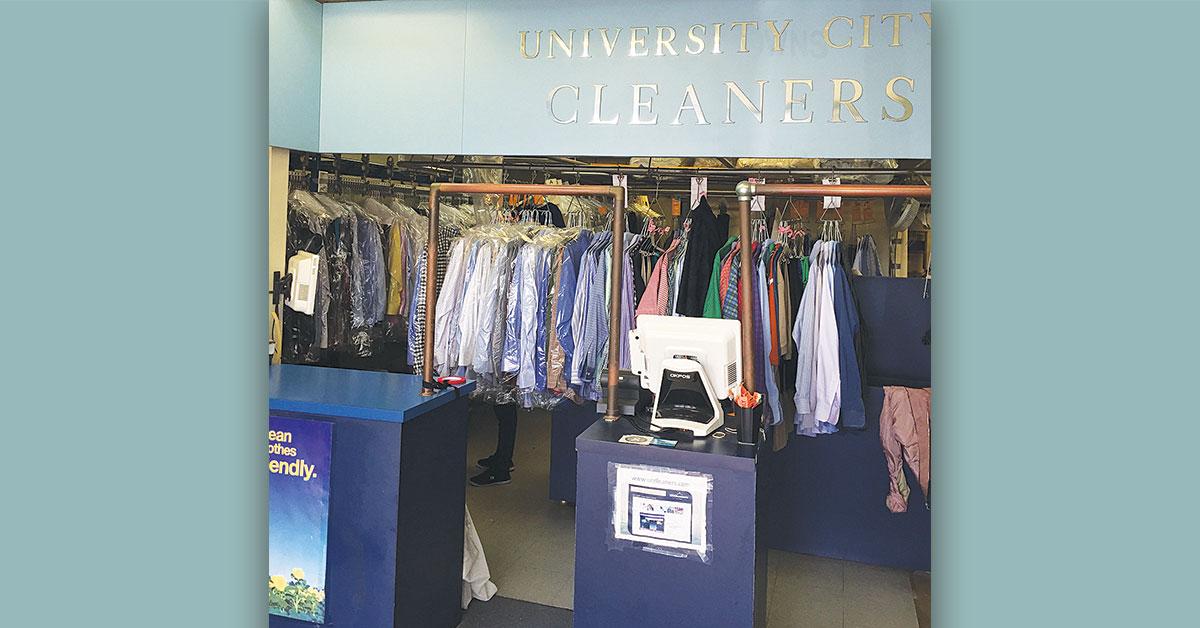SAN DIEGO — Tasked to become a “green” operator, University City Cleaners, in San Diego, recently ousted its cleaning practices for eco-friendly wet cleaning.
The foundational change left customers gleeful, the environment grateful and the business more productive and efficient. Who might owners Hyeon-Dong and Young-Sook Choi thank for the change? Their landlord, of course.
“Our landlord wanted to use our lease extension to renegotiate the lease terms in order to mitigate any risks associated with dry cleaning and its possible negative environmental effects,” says daughter Miriam Choi.
So, after 20 years in business, Choi stepped in to research non-toxic drycleaning alternatives on behalf of her parents. She referenced the California EPA guidebook, going so far as to contact the author and “pick his brain.” She sought information and validation from the California Air Resources Board.
She called Kendall Hendricks at Hendricks Mechanical Inc., a full-service drycleaning equipment distributor in Fullerton, Calif.
“We feared that we would make this big business change and purchase new equipment and potentially still not get our lease extended because we didn’t meet EPA standards,” says Choi. “So we wanted preapproval on the equipment replacement before making changes.”
After considerable due diligence, University City Cleaners removed its 60-pound capacity machine and replaced it with a Poseidon Textile Care System, consisting of a 60-pound capacity wetcleaning machine and matching dryer.
“The California Air Resources Board provided written approval that Poseidon did qualify for the nontoxic drycleaning program,” says Choi. “That validated the fact that we were replacing our drycleaning machine with a fully nontoxic alternative. We made the full switch this past year and it’s been great.”
The wetcleaning machine, according to Hendricks, brings advanced programmability and generates extract speeds up to 400 G-force.
It also offers complete control over water temperature by degree (up to 194 degrees), wash rotation speed and duration, five on/off wash rotation combinations, multiple water levels, bath cool-down by degree, automatic chemical injection, and six programmable extract speeds.
It’s so flexible, it can be programmed for a wash cycle of as little as three minutes up to an extended program lasting for hours or days.
An auxiliary heat option enables bath water temperatures to be increased by degree. Optional overnight soak and delayed start are also standard features.
The new dryer, according to Hendricks, touts the industry’s newest technology and complete phased control over the drying process.
Each phase is programmable for drum rotation speed, drum rotation interval, moisture level, timed reversing, input air temperature, drying temperature, heating temperature, drying time and time limit.
“The dryer comes from the firm already programmed and it’s the key to the whole system,” says Hendricks. “Drying the garment properly without over-drying is critical so it isn’t damaged due to shrinkage or heat.”
He notes the dryer has an enclosed heater so there is no open flame to create hot spots: “It’s programmable by phase and features moisture sensing so it stops when a garment hits a preset moisture level. Most dryers don’t allow control over inlet and outlet heat, or such phased programmability.”
The result is that all items — from wedding dresses and wool suits to silk blouses and cashmere — can be safely wet cleaned, dried and then finished, according to Hendricks. “Air drying will soon be a thing of the past,” he says.
Check back Thursday for the conclusion.
Have a question or comment? E-mail our editor Dave Davis at [email protected].
